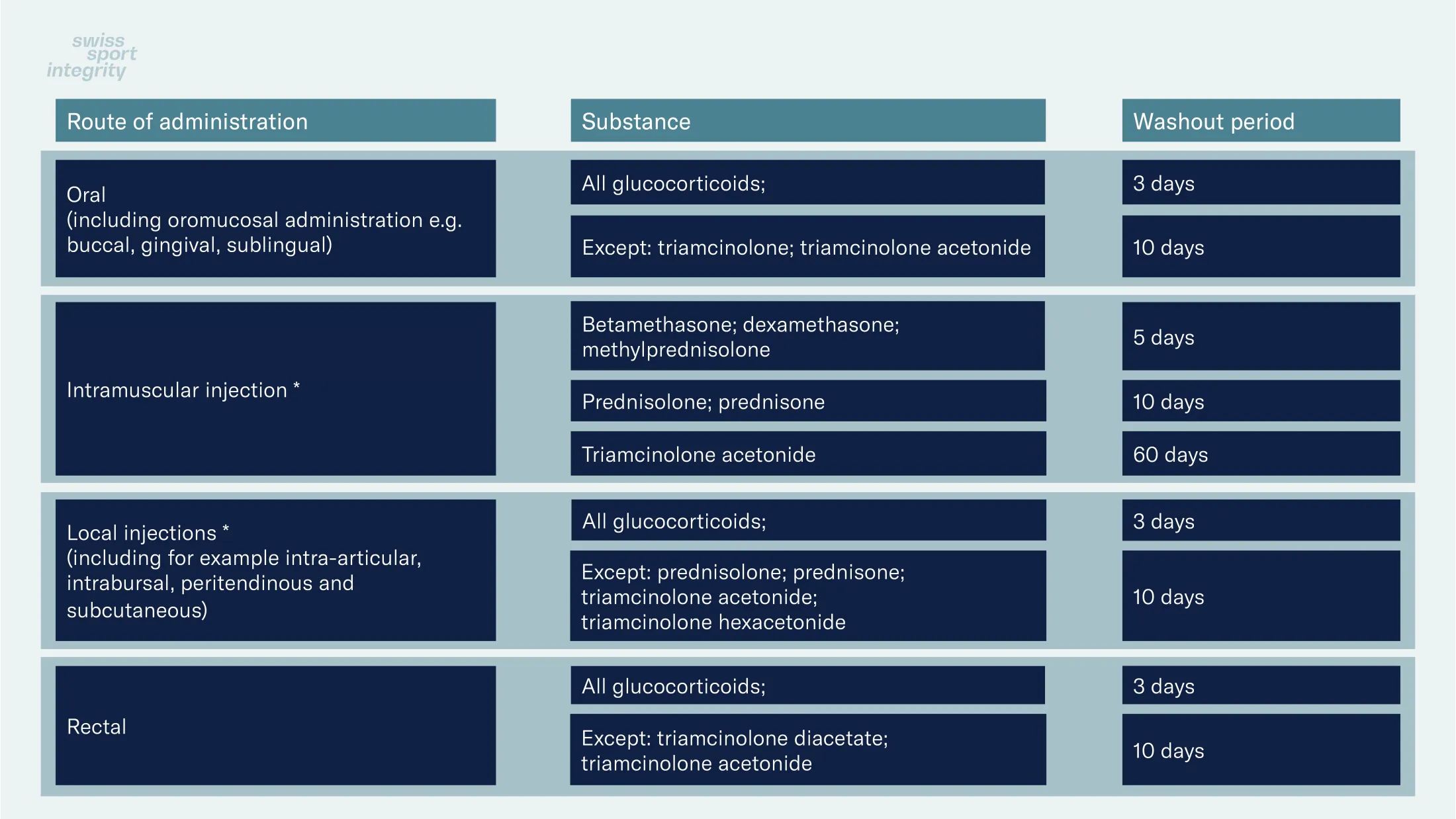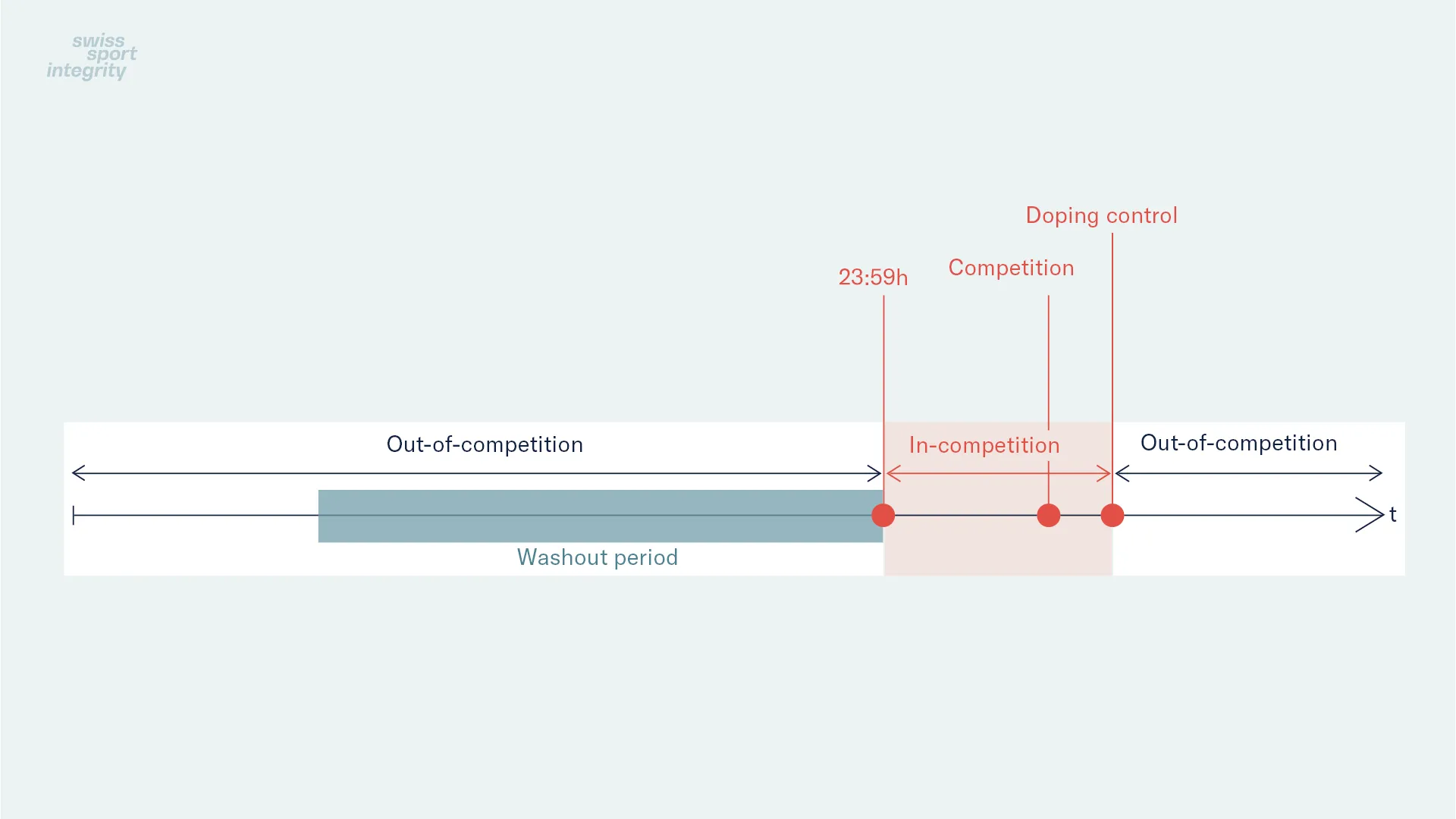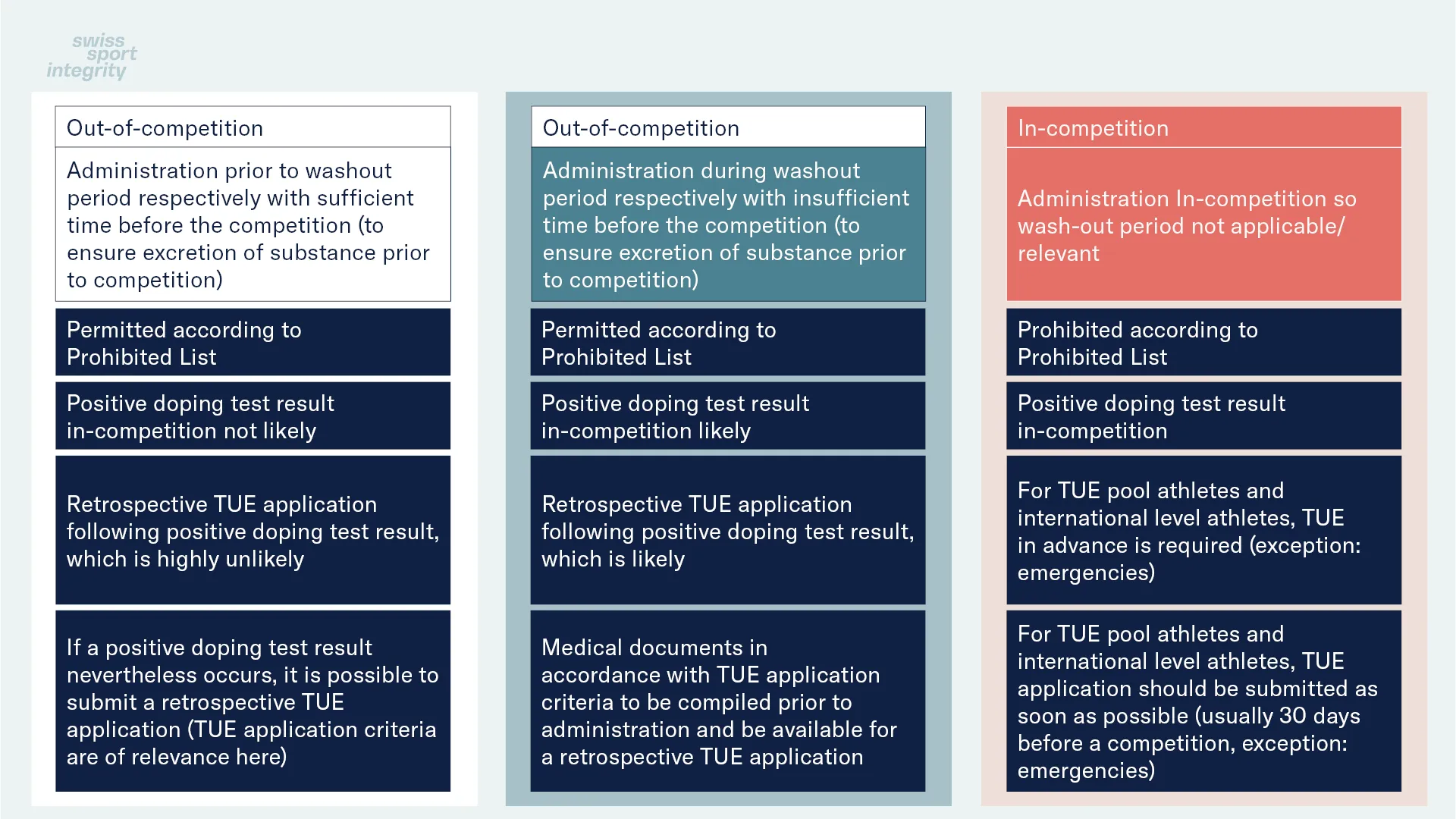Glucocorticoids are used in the treatment of various illnesses e.g. allergies, asthma, sudden hearing loss and rheumatological disorders. The prohibited status of glucocorticoids is dependent on their route of administration.
Prohibited status of glucocorticoids
All glucocorticoids are prohibited in-competition if they are administered via the following routes:
- any injectable route of administration, i.e. all injections administered with a needle [(e.g. intra-articular (into a joint), intrabursal (into a bursa), intramuscular (into a muscle), intravenous (into a vein), peritendinous (around a tendon) or subcutaneous (under the skin)];
- oral, i.e. administration where medication is swallowed by mouth, including oromucosal use (for example buccal (via oral mucosa), gingival (on the gums) or sublingual (under the tongue)];
- rectal, i.e. administration into or through the rectum.
Other routes for administering glucocorticoids are permitted at any time (in-competition and out-of-competition). Examples:
- Dermatological (e.g. application of a cream on the skin)
- Inhalation into the lungs
- Intranasal (e.g. nasal spray)
- Ophthalmological (e.g. eye drops)
- Perianal (e.g. external application of a cream around the anus)
- Intracanal dental administration (into a root canal)
Check the prohibited status of your medication with the medication inquiry service Global DRO.
Prohibited In-Competition
‘In-Competition’ is the period commencing at 11:59 pm on the day before a competition in which the athlete is scheduled to participate, through to the end of this competition and the sample collection process relating to such competition. ‘Out-of-Competition’ refers to any time that is not ‘In-Competition’. WADA-approved exceptions to this definition are possible.
If a substance is prohibited ‘In-Competition’, its use during this period or its detection in a doping control that takes place ‘In-Competition’, among others, is considered an anti-doping rule violation. Exceptions to this are cases in which a therapeutic use exemption (TUE) has been granted or can be granted retroactively.
Some substances remain detectable for a long time. This means that they can be detected during a doping control taking place ‘In-Competition’, even if they are no longer being used on the day of the competition.
Washout periods for glucocorticoids prohibited in-competition
The period from the use of a glucocorticoid until its excretion from the body is dependent on the substance, route of administration and dose. This means that, following use of a glucocorticoid, the period of time during which it is possible to test positive during an in-competition doping control will vary. The period of time from administration to excretion is known as the washout period.
If the washout periods below are followed for therapeutic application prior to a competition, a positive test result in-competition is highly unlikely. To calculate a safe time gap for an application prior to a competition, the washout period is added before competition. Please note that it is important to work back from 11:59 pm on the day before a competition.
For intravenous administration of glucocorticoids, the washout period specified for oral administration can be used as a reference.

* Sustained-release formulations, such as betamethasone acetate, betamethasone dipropionate or methylprednisolone acetate, may be detectable in a doping control past the washout period. In such cases, the instructions provided below under ‘Out-of-competition’ ‘Prior to washout period’ (first column, white background) apply.
Administration of glucocorticoids out-of-competition
Depending on the choice of treatment time, medication, route of administration and competition planning, there is a lower or higher risk of a positive doping test result in any subsequent competition. Essentially, no medically necessary treatment should be withheld. At the same time, the administrative requirements concerning TUE applications should be respected.

Retrospective TUE application with administration of glucocorticoids out-of-competition
For medically prescribed treatments which are only prohibited ‘in-competition’ and the administration of which will be terminated before this time period, a retrospective TUE application can be submitted in the event of a positive doping test result occurring. This exception is detailed in article 4.1, lit. e, of the Regulatory Statutes for Therapeutic Use Exemptions (RSTUE). Even with a retrospective TUE application, all four conditions for obtaining a TUE must be met (RSTUE article 4.2). Athletes should therefore consult their doctor to compile medical documents in accordance with TUE application criteria (see below) prior to treatment with any glucocorticoids prohibited in-competition. These can then be submitted retrospectively in the event of a positive doping test result and the corresponding request.
TUE application criteria
It is of great importance for athletes that any diagnosis and choice of treatment is justified and documented in detail by the doctor undertaking the treatment so that a comprehensive medical file can then be submitted, in the event that a TUE application is required. The TUE Commission needs to be able to trace the diagnosis and choice of treatment via the submitted documents when assessing a TUE application.
Musculoskeletal conditions, sudden hearing loss, allergies and other indications
TUE application criteria: Glucocorticoids (German)
Specific application criteria for concrete indications
TUE application criteria: Asthma (German)
TUE application criteria: Inflammatory Bowel Disease (German)
